Invited Presentations
Invited Speakers
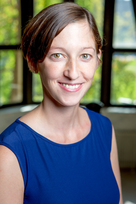 |
Understanding Network Structure and Function in the Human Brain
Danielle S. Bassett,
University of Pennsylvania, USA
Danielle Bassett is Eduardo D. Glandt Faculty Fellow and an associate professor in the Department of Bioengineering at the University of Pennsylvania. A physicist and systems neuroscientist, she applies network science to the human brain and other complex biophysical systems. Bassett received her PhD in Physics from the University of Cambridge in 2009, and did postdoctoral work at the University of California Santa Barbara. She received a Sloan Fellowship, an ONR Young Investigator award, and an NSF CAREER award in the years 2014, 2015, and 2016, respectively. In 2014 she became the youngest individual ever to be named a MacArthur Fellow, and in 2016 was named one of the Popular Science Brilliant 10.
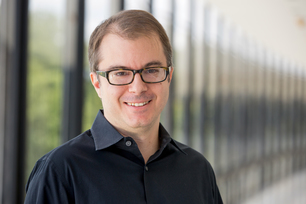 |
Structure and Randomness in Encrypted Computation
Craig B. Gentry, IBM Research, USA
Craig Gentry is a member of the Cryptography Research Group in IBM's T. J. Watson Research Center. He obtained his Ph.D. in computer science from Stanford in 2009, and also has a law degree from Harvard Law School. In 2009, Craig constructed the first fully homomorphic encryption (FHE) scheme, which allows data to be processed in arbitrarily complex ways while it remains encrypted, thereby solving a major open problem of 30 years. FHE allows data processing to be outsourced (e.g., to the cloud) without sacrificing privacy--in particular, without disclosing the decryption key. Gentry has won numerous awards for his work, including the ACM Grace Murray Hopper Award in 2010 and a MacArthur Fellowship in 2014 as well as an invitation to present at the International Congress of Mathematicians.
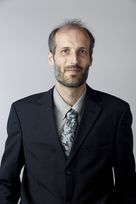 |
Bridging Scales
Martin Hairer, Imperial College London, United Kingdom
Martin Hairer received his PhD from the University of Geneva in 2001 and is currently the Regius professor of mathematics at the University of Warwick, UK. He has held visiting fellowships and invited positions at a number of institutions, including the Newton Institute for Mathematical Sciences, the Institute for Advanced Study in Princeton, the École Normale Supérieure in Paris, the Institut des Hautes Études Scientifiques, and the University of Toulouse.
Hairer's main research interests cover various areas of probability theory, including stochastic dynamics and the study of stochastic partial differential equations. He is the author of over 70 articles and one research monograph. He is a Fellow of the Royal Society, of the Americal Mathematical Society, of the Academy of Sciences Leopoldina, and of the Austrian Academy of Sciences. His work was distinguished with a number of prizes, most notably the Fermat prize and a Fields Medal.
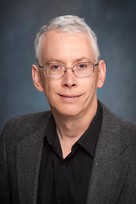 |
The Future of Scientific Computation
Bruce Hendrickson, Lawrence Livermore National Laboratory, USA
Bruce Hendrickson is the Associate Director for Computation at Lawrence Livermore National Lab where he leads an organization of more than 1000 computing professionals. He earned his PhD in Computer Science from Cornell, and spent many years at Sandia Labs conducting research in various aspects of computational science. His research interests include parallel algorithms, combinatorial scientific computing, linear algebra, data science and computer architecture. He is a Fellow of SIAM and of AAAS.
 |
Applied and Computational Mathematics: A New Curriculum for 21st Century Discovery and Innovation
Jeffrey Humpherys, Brigham Young University, USA
Jeffrey Humpherys is a professor of mathematics at Brigham Young University, former vice chair of the SIAM Activity Group on Applied Mathematics Education, and a two-term member of the SIAM Education Committee. He is the recipient of several grants from the Department of Defense and the National Science Foundation, including an NSF CAREER award. His research spans a wide range of topics in applied and computational mathematics, from nonlinear partial differential equations to network sciences to machine learning.
Joint speaker with the SIAM Conference on Applied Mathematics Education (ED18).
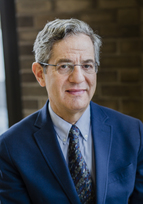 |
| � NYU Photo Bureau: Kahn. |
The Mathematics of Wrinkles and Folds
Robert V. Kohn, New York University, USA
Robert V. Kohn graduated from Harvard University in 1974. He got his M.Sc. at the University of Warwick in 1975 then went to Princeton, where he got his PhD in 1979 under the guidance of Fred Almgren. From 1979-1981 he was a Visiting Member at New York University's Courant Institute of Mathematical Sciences, supported by an NSF Mathematical Sciences Postdoctoral Fellowship. In 1981 he joined the faculty of the Courant Institute, and he has remained there since. He has been Professor of Mathematics at NYU since 1988; in 2017 he was named Julius Silver, Roslyn S. Silver, and Enid Silver Winslow Professor of Mathematics.
Robert has worked on many types of PDE problems including the Navier-Stokes equations, electric impedance tomography, relaxation of variational problems, blowup of semilinear heat equations, and homogenization. In recent years much of his research has addressed problems from materials science, with particular emphasis on energy-driven pattern formation. His recognitions include an Alfred P. Sloan Foundation Fellowship (1984-6), SIAM's Ralph E. Kleinman Prize (1999), and membership in the American Academy of Arts and Sciences (2017). He was a Plenary Speaker at ICM 2006 and an Invited Speaker at ICIAM 2007, and is both a Fellow of the American Mathematical Society and a SIAM Fellow.
Joint speaker with the SIAM Conference on Mathematical Aspects of Materials Science (MS18).
 |
Recent Advances in Dimensionality Reduction with Provable Guarantees
Jelani Nelson, Harvard University, USA
Jelani Nelson is an Associate Professor of Computer Science at Harvard University. His main research interest is in algorithm design and analysis, with recent focus on streaming algorithms, dimensionality reduction, compressed sensing, and randomized linear algebra algorithms. He completed his Ph.D. in computer science at MIT in 2011, receiving the George M. Sprowls Award for best computer science doctoral dissertations at MIT. He is the recipient of an NSF CAREER Award, ONR Young Investigator Award, ONR Director of Research Early Career Award, Alfred P. Sloan Research Fellowship, and Presidential Early Career Award for Scientists and Engineers (PECASE).
 |
Nonlinear Patterns and Waves: From Spectra to Stability and Dynamics
Björn Sandstede, Brown University, USA
Björn Sandstede is a Professor of Applied Mathematics in the Division of Applied Mathematics at Brown University. His research focuses on applied dynamical systems and, specifically, on the dynamics of patterns and nonlinear waves; more recently, he also worked on applications in biology. Sandstede has published more than 100 papers in peer-reviewed journals. Before moving to Brown, he held faculty positions at the Ohio State University and the University of Surrey. Sandstede received an Alfred P Sloan Research Fellowship, the JD Crawford Prize of the SIAM Activity Group on Dynamical Systems, a Royal Society Wolfson Research Merit Award, the Elsevier Jack Hale Award, and Brown University's Philip Bray Award for Teaching Excellence.
 |
Automatic Behavioral Analysis for Computational Psychiatry at Home
Guillermo Sapiro, Duke University, USA
Guillermo Sapiro was born in Montevideo, Uruguay in 1966. He received his B.Sc. (summa cum laude), M.Sc., and Ph.D. from the Department of Electrical Engineering at the Technion, Israel Institute of Technology, in 1989, 1991, and 1993 respectively. After post-doctoral research at MIT, Dr. Sapiro became Member of Technical Staff at the research facilities of HP Labs in Palo Alto, California. He was with the Department of Electrical and Computer Engineering at the University of Minnesota, where he held the position of Distinguished McKnight University Professor and Vincentine Hermes-Luh Chair in Electrical and Computer Engineering. Currently he is the Edmund T. Pratt, Jr. School Professor with Duke University.
G. Sapiro works on theory and applications in computer vision, computer graphics, medical imaging, image analysis, and machine learning. He has authored and co-authored over 400 papers in these areas and has written a book published by Cambridge University Press, January 2001. A Fellow of IEEE and SIAM, Sapiro was awarded the Gutwirth Scholarship for Special Excellence in Graduate Studies in 1991, the Ollendorff Fellowship for Excellence in Vision and Image Understanding Work in 1992, the Rothschild Fellowship for Post-Doctoral Studies in 1993, the Office of Naval Research Young Investigator Award in 1998, the Presidential Early Career Awards for Scientist and Engineers (PECASE) in 1998, the National Science Foundation Career Award in 1999, and the National Security Science and Engineering Faculty Fellowship in 2010. He received the test of time award at ICCV 2011. He was the founding Editor-in-Chief of the SIAM Journal on Imaging Sciences.
 |
Seeing Through Rock: Mathematics of Inverse Wave Propagation
William W. Symes, Rice University, USA
William W. Symes has spent the bulk of his career at Rice University, where he is Noah G. Harding Professor Emeritus in Computational and Applied Mathematics. He has also been a faculty member in Earth Science at Rice. He holds degrees in Mathematics from University of California - Berkeley and Harvard University. His research centers around the relation between the coefficients of wave equations and their solutions, and on inverse problems (inferring the coefficients from the solutions) posed in terms of this relation. Inverse problems for wave equations arise in seismology, where the solutions represent measurable physical fields, and coefficients encode the mostly inaccessible distributions of mechanical properties in the Earth's interior. To further investigation of such problems in an industrial context, Symes founded a research consortium, The Rice Inversion Project, which has been sponsored for more than 25 years by firms in the oil and computer industries. Its activities encompass theoretical investigations, development of algorithms and software, experimentation with synthetic and field data, and mentoring of the next generation of mathematical scientists: the project has supported the work of more than forty MA, PhD, and postdoctoral students. Amongst other honors and awards, Symes has received the Ralph E. Kleinman and Geoscience Career awards from SIAM, and the Desiderius Erasmus prize from the European Association of Geoscientists and Engineers.
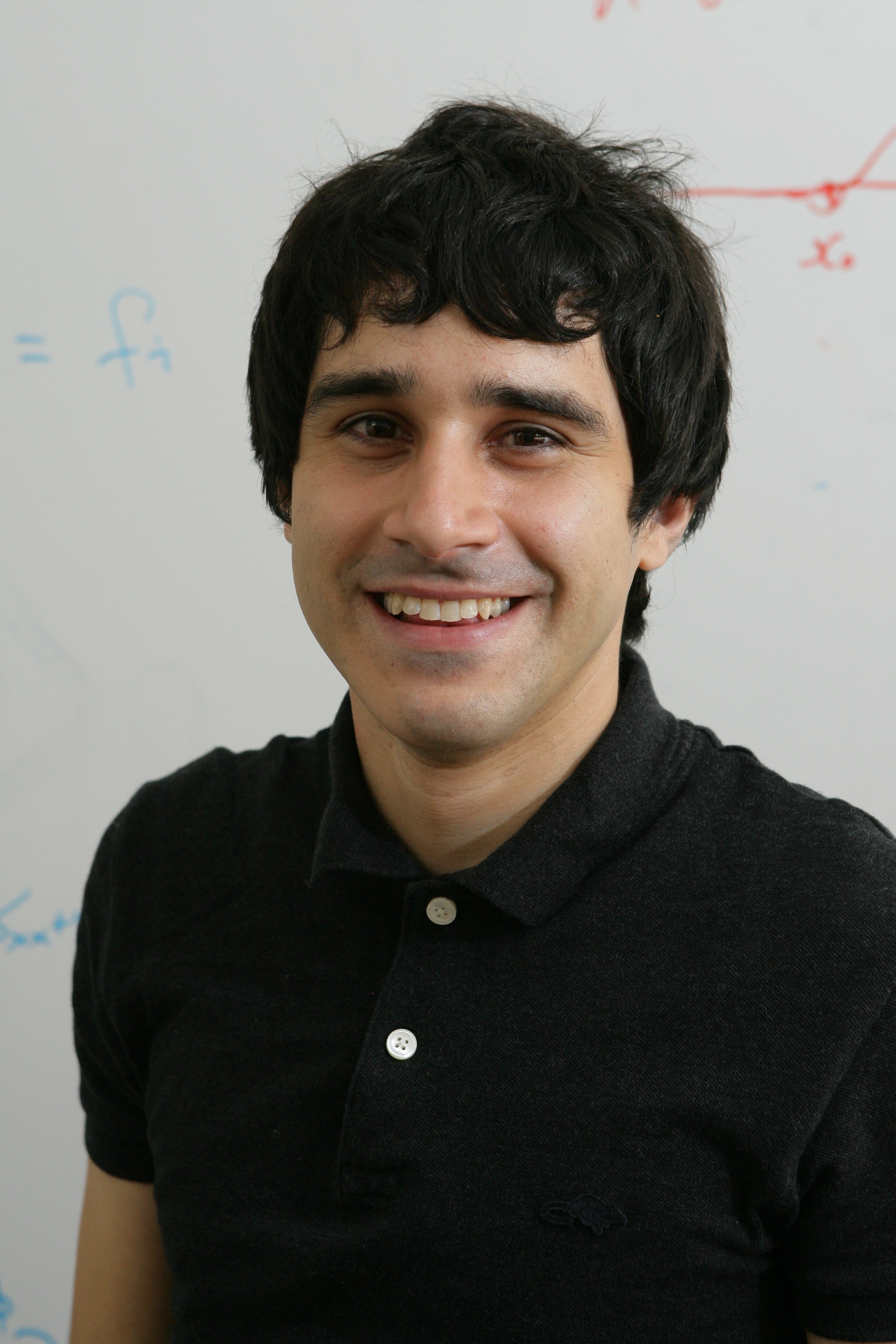 |
American Mathematical Society (AMS) Invited Address
Snow Business: Computational Elastoplasticity in the Movies and Beyond
Joseph M. Teran, University of California, Los Angeles, USA
Joseph Teran is a professor of applied mathematics at UCLA. His research focuses on numerical methods for partial differential equations arising in classical physics, including computational solids, computational fluids, multi-material interactions, fracture dynamics and computational biomechanics. Exciting applications of his work arise in virtual surgery and movie special effects with Walt Disney Animation. Professor Teran was a recipient of a 2011 Presidential Early Career Award for Scientists and Engineers (PECASE) and a 2010 Young Investigator award from the Office of Naval Research. In 2008, Discover Magazine named him one of the 50 “Best Brains in Science”.
 |
Algebraic Vision
Rekha R. Thomas, University of Washington, USA
Rekha Thomas received a Ph.D. in Operations Research from Cornell University in 1994. After holding postdoctoral positions at the Cowles Foundation for Economics at Yale University and the Konrad-Zuse-Zentrum for Informationstechnik in Berlin, she worked as an assistant professor of Mathematics at Texas A&M University from 1995 - 2000. Since 2000, she has been in the Department of Mathematics at the University of Washington in Seattle where she held the Robert R. and Elaine F. Phelps Endowed Professorship from 2008-2012. She is currently the Director of the Undergraduate Program in Mathematics at UW. Her research interests are in optimization and applied algebraic geometry.
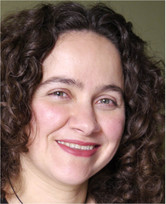 |
Connections and Reconnections: A Link Between Mathematics, Physics and DNA
Mariel Vazquez, University of California, Davis, USA
Mariel Vazquez is Professor of Mathematics, and of Microbiology & Molecular Genetics at the University of California Davis. She is a mathematical biologist whose research focuses on the applications of topological and discrete methods to the study of DNA, with an emphasis on the topological changes affected by enzymes, as well as on the study of chromosomal rearrangements as in cancer, and of processes of DNA packing. Her contributions are characterized by the use of tools from pure mathematics (knot theory, low-dimensional topology, graph theory) to the study of important biological questions. Her work, often collaborative, has provided keen insights in the packing of DNA and in the mechanism of enzymes involved in DNA replication and DNA repair.
Mariel obtained her PhD in Mathematics in 2005 from Florida State University. She is recipient of the 2016 Blackwell-Tapia Prize, a 2014 CAMPOS scholarship at UC Davis, the 2014 Mohammed Dahleh Distinguished Lectureship at UC Santa Barbara, a 2012 U.S. Presidential Early Career Award for Scientists and Engineers (PECASE), and a 2011 NSF CAREER Award. The PECASE honored her “for excellent interdisciplinary and international research at the interface of mathematics and biology, and for creativity and dedication to recruiting, training, and mentoring, and helping students from underrepresented groups achieve their goals.”
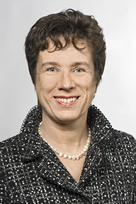 |
Challenges for Numerical Analysis in Large-Scale Simulation
Barbara Wohlmuth, Technische Universität München, Germany
Barbara Wohlmuth works in the field of numerical simulation techniques for partial differential equations with special focus on discretizations, a posteriori error analysis, fault tolerance, multi-scale and massively parallel iterative solvers, variational inequalities, and the mathematical modeling of coupled multi-field problems. Interdisciplinary cooperation with engineers and computer sciences play an important role in her work. After studying mathematics at the Technische Universität München (TUM) and the University of Grenoble she completed her PhD in 1995 at TUM and habilitated in 2000 at the University of Augsburg. As a PostDoc she stayed at the Courant Institute of Mathematical Sciences at New York University and as a visiting professor in France and Hong Kong. In 2001 she accepted a full professor position for Numerical Mathematics at the Universität Stuttgart and in 2010 at TUM. She holds the Magne Espedal guest professor at the University Bergen. She serves on numerous Editorial Boards, acts as a reviewer for national research foundations and is member of international scientific advisory boards. Currently she is the Director of the International Graduate School of Sciences and Engineering at TUM. Barbara Wohlmuth is elected member of the DFG Review Board 312 for Mathematics and a member of the Bavarian Academy of Sciences and of the European Academy of Sciences. In 2012 she was awarded the prestigious Gottfried Wilhelm Leibniz Prize of the German Research Foundation (DFG).
Special Lectures
 |
I.E. Block Community Lecture
How Paradoxes Shape Mathematics and Give us Self-Verifying Computer Programs
Thomas Hales, University of Pittsburgh, USA
Thomas C. Hales is the Mellon Professor of Mathematics at the University of Pittsburgh. He received B.S. and M.S. degrees from Stanford University, a Tripos Part III from Cambridge University, and a Ph.D. from Princeton University in representation theory under R. P. Langlands. He has held postdoctoral and faculty appointments at MSRI, Harvard University, the University of Chicago, the Institute for Advanced Study, and the University of Michigan. In 1998, Hales proved Kepler’s 1611 conjecture on the most efficient way to stack oranges. During the following 18 years, Hales led the Flyspeck project, culminating in a formal computer proof of the result, published in 2017. Hales, a Fellow of the AMS, won the Chauvenet Prize in 2003 and the Lester R. Ford Award in 2008.
The John von Neumann Lecture
Charles F. Van Loan, Cornell University, USA
The AWM-SIAM Sonia Kovalevsky Lecture
Eva Tardos, Cornell University, USA
Julian Cole Lectureship
L. Pamela Cook, University of Delaware, USA
W.T. and Idalia Reid Prize
Volker Mehrmann, Technische Universität Berlin, Germany

